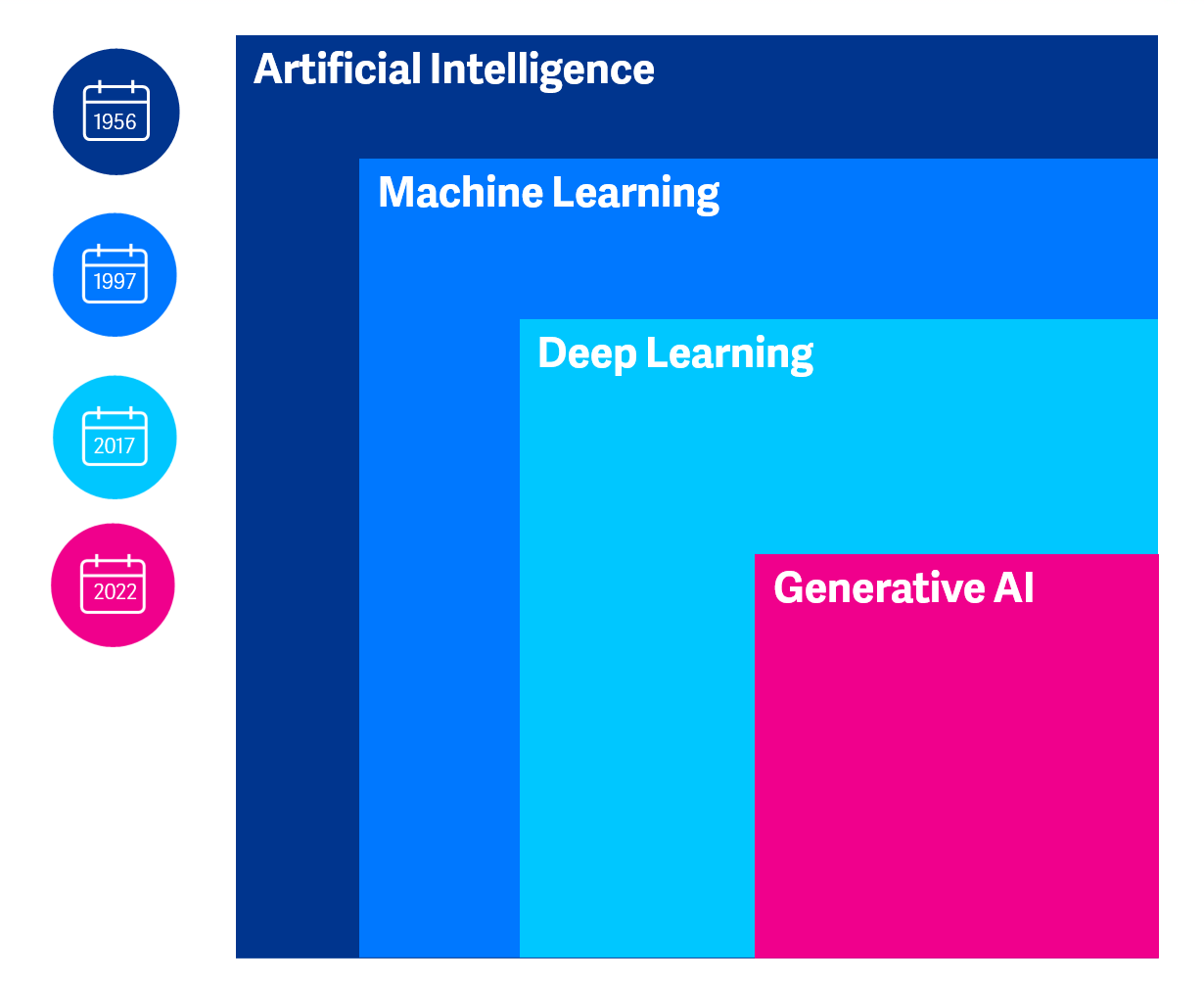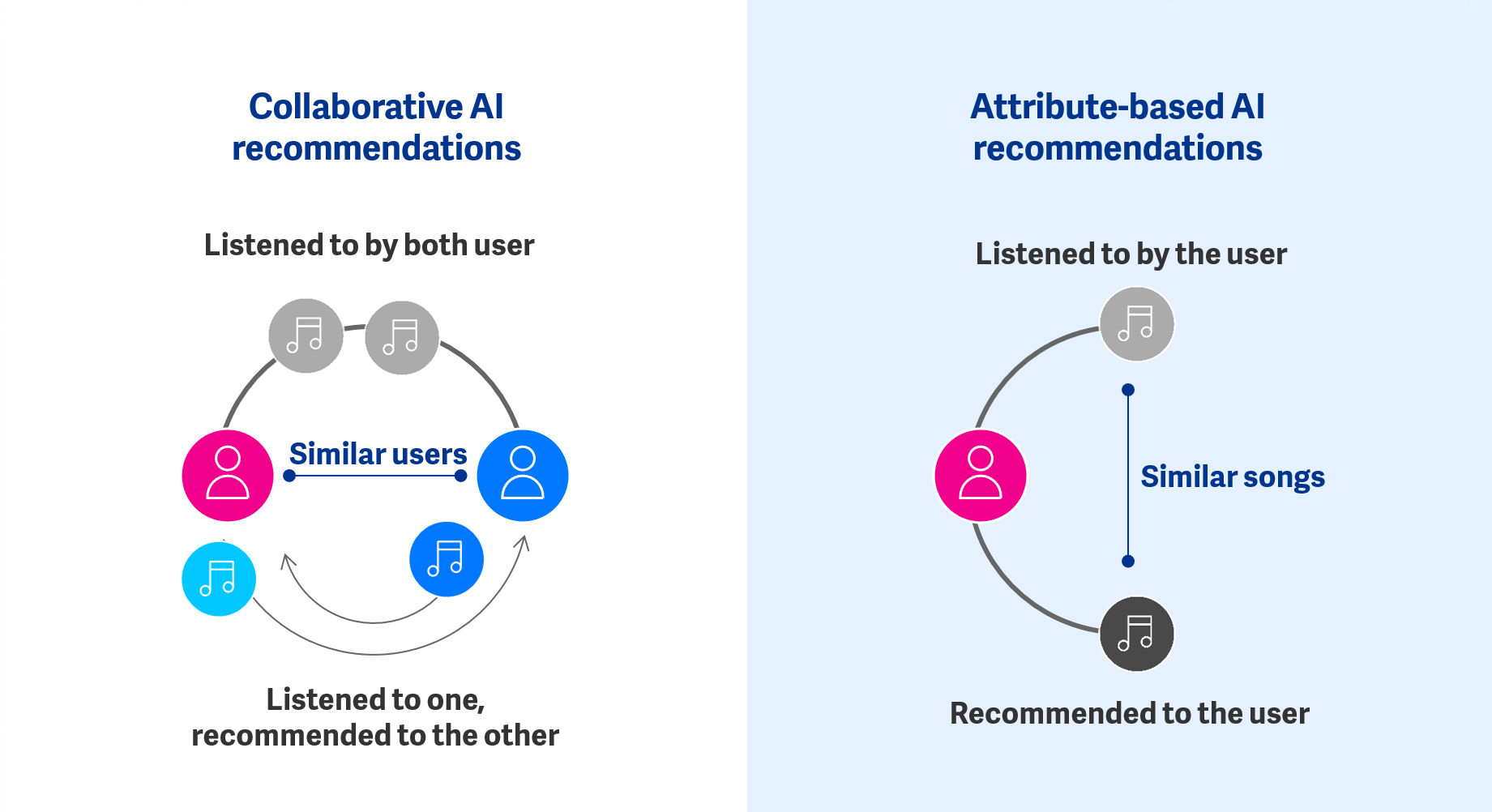In February 2023, just 6 months after ChatGPT's release, Microsoft’s Bill Gates told Forbes: “It’s pretty stunning that what I’m seeing in AI just in the last 12 months is every bit as important as the PC, the PC with GUI, or the internet. As the four most important milestones in digital technology, this ranks up there.”
Key takeaways:
- AI is a computer science that has been around since the 1950s
- AI has now hit the mainstream with Generative AI technologies like ChatGPT
- Generative AI technologies, like ChatGPT are an intricate blend of linguistics, mathematics, and computer science
While it seems to be everywhere, AI has been a long time coming. The term Artificial Intelligence was first coined by John McCarthy in 1956, as the computer science field sought to create machines to replace or exceed human intelligence, with the first AI software program built shortly after. Mathematician Alan Turing invented the famous ‘Turing Test’ which was designed to find if computer answers are distinguishable from human answers.
A big leap forward for AI occurred in the 1990s when machine learning capabilities hit maturity. At this time, IBM’s Deep Blue made the headlines for outsmarting two human chess champions in a game. This type of AI ran on a supercomputer and used large data sets to learn and make decisions and predictions.
Deep learning came next, which is a neural network technique based on the way the human brain thinks. Google was a leader with its ‘Transformer Architecture’ released in 2017, which its AI able to understand complex patterns in pictures and text to arrive at insights and predictions. Natural Language Processing (NLP) is a big advantage of deep learning, as this means the AI can comprehend human language.
Deep learning formed the basis of the newest and perhaps most exciting form of AI, Generative AI (GenAI). GenAI is the ability for the AI to draw on existing information but create new information – whether than be text, images, speech, music, software code or various designs.
In November 2022, OpenAI launched ChatGPT a type of GenAI, which translates natural language to computer code, or creates and edits original text or images. Some argue with ChatGPT the responses are indistinguishable from a human – and that the Turin test has been passed.

Understanding machine learning
Perhaps a better way to explain machine learning and neural networks is this is through an example.
Any lover of music will regularly get surprised by the accuracy of Spotify’s matching engine and the new and old music it suggests. Spotify uses several forms of AI to develop content recommendations.
The first is collaborative recommendations which looks at a user’s preferences, likes and ratings and then compares it to a user it defines as similar. So that if user A and user B express similar preferences and ratings through their playlists of ‘likes’, it assumes that a particular song will likely appeal to both.
The second AI system is based on the attributes of the songs. It uses natural language processing or NLP to search the internet for articles about songwriters and songs. It uses this information to determine the similarity of two or more songs.
The third AI system analyses the song itself and creates an audio spectrogram – its volume, harmony, beats per minutes, etc. and then looks for songs with a similar audio spectrogram.
These three types of AI are the magic that allows Spotify to create relevant recommendations to its users.
Amazon and Netflix and other recommendation systems use similar AI engines.

Understanding Generative AI
Now let’s consider the recently released Generative AI tools. Tools like OpenAI’s ChatGPT or Dall-e or Midjourney’s image generator turn text prompts into text answers, or into images, or into presentations or into code, and I expect soon into songs, videos and 3D images.
These forms of generative AI instantly generate content that’s often so good, you’d swear it was created by a real person.
GenAI works by using incredible amounts of data, known as large language models or LLMs, such as everything written on the internet. It then uses its massive computing power to in almost real-time answer any question posed to it using AI reasoning and the likelihood of correctness. For every word or output it comes up with, ChatGPT decides in real time what the next most probable word should be based on previous learnings and pattern recognition.

For those more technically inclined GenAI works something like this:
1. Large Language Model as the data source: The AI starts by analysing a large collection of data (the LLM), such as books, articles, or any written content on the internet.
2. Preprocessing: The AI then break the LLM into smaller parts, like sentences or words. This process is called tokenisation. It may also convert words into numbers using a technique called embedding, so it can perform mathematical operations on them.
3. Building a model: The AI then uses a neural network to understand the relationships between these words, sentences, and ideas. Layers of nodes (neurons) are connected in a way that can recognize complex patterns, such as grammar, style or context.
4. Training: During training, the model is fed examples and learns to predict what comes next in a sequence. For example, given the sentence "The chicken crossed the ___," it learns to predict words that could fill in the blank. Overtime, training adjusts the AI’s internal parameters using algorithms to reduce the error in its predictions.
5. Generating new text (or images, videos, etc.): Once trained, the AI can generate new text that follows the patterns and rules it has learned. It does this by starting with a prompt sentence and then repeatedly it predicts the next word or words, building a new piece of text from scratch. You can actually see ChatGPT thinking (or coming up the next most probable word) when the cursor flashes.
6. Fine-tuning: If the generated text needs to follow specific guidelines or styles, the model can be fine-tuned. This involves training the model on a smaller, specialized dataset, allowing it to adapt its previously learned knowledge to new constraints.
In essence, generative AI for creation is intricate blend of linguistics, mathematics, and computer science. It transforms words or images or videos into mathematical representations, learning the intricate rules and patterns of language or imagery through complex algorithms, and then using this knowledge to construct new text or images or video.
Humans and machines - How AI can supercharge advice firms
Netwealth's 2023 AdviceTech report, Humans and Machines, provides a detailed examination of the role artificial intelligence (AI) and adjacent technologies will have for advice firms. We draw on extensive research to provide areas of focus, detailed examples and useful tips so you can deploy AI successfully into your practice today.
